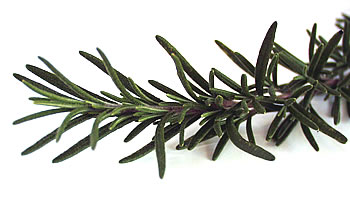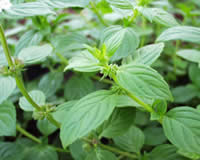Rosemary
This fragrant herb has had a long affiliation with Christmas.  A perennial in warm climates, rosemary is now popular for the holidays in the form of topiaries and wreaths. Of course, rosemary is popular in the kitchen, too, for seasoning breads, soups, meat, and much more.
A perennial in warm climates, rosemary is now popular for the holidays in the form of topiaries and wreaths. Of course, rosemary is popular in the kitchen, too, for seasoning breads, soups, meat, and much more.
History of Rosemary
Until the twentieth century, Rosemary was as popular for the holidays as mistletoe and holly. It was used in garlands to decorate and scent households during the Christmas season.
 Legend tells that rosemary gained its wonderful scent when Mary placed the Christ Child’s clothing on the plant. Rosemary is also thought to deter evil spirits, encouraging good will during the holidays.
Legend tells that rosemary gained its wonderful scent when Mary placed the Christ Child’s clothing on the plant. Rosemary is also thought to deter evil spirits, encouraging good will during the holidays.
Growing Rosemary
Rosmarinus officinalis is native to the rocky hillsides of the Mediterranean. Most of us don’t enjoy such a climate, so we do our best to provide for the needs of rosemary. To mimic such a situation, provide well-drained soil or potting mix, four hours of full sun (at least), and water every day (but don’t let the roots sit in water). While rosemary can survive outdoors in zones 7-10 through the winter, other zones must bring it indoors.
During winter, rosemary needs temperatures that aren’t above 65 degrees, but aren’t below 10 degrees. Bring your potted rosemary into the bathroom once a week while you take a hot shower so it can benefit from the steam. If you receive or buy a rosemary tree for Christmas, place the original pot inside a larger pot with rocks in the bottom (and a hole in the bottom of the pot) to encourage proper drainage. Place the plant in a south or west window to receive as much light as possible.  You can move the pot outdoors in April-May and then bring it back inside in October.
You can move the pot outdoors in April-May and then bring it back inside in October.
Fertilize rosemary during the spring and summer months. If it needs to be repotted, do so in the spring, using a pot about 1-2 inches larger in diameter, using well-drained soil. To prune, pinch back tips as necessary to maintain the plants shape. Remove any dead branches completely.
Still craving more info on rosemary, 2000’s herb of the year? Visit the Herb Society of America.





